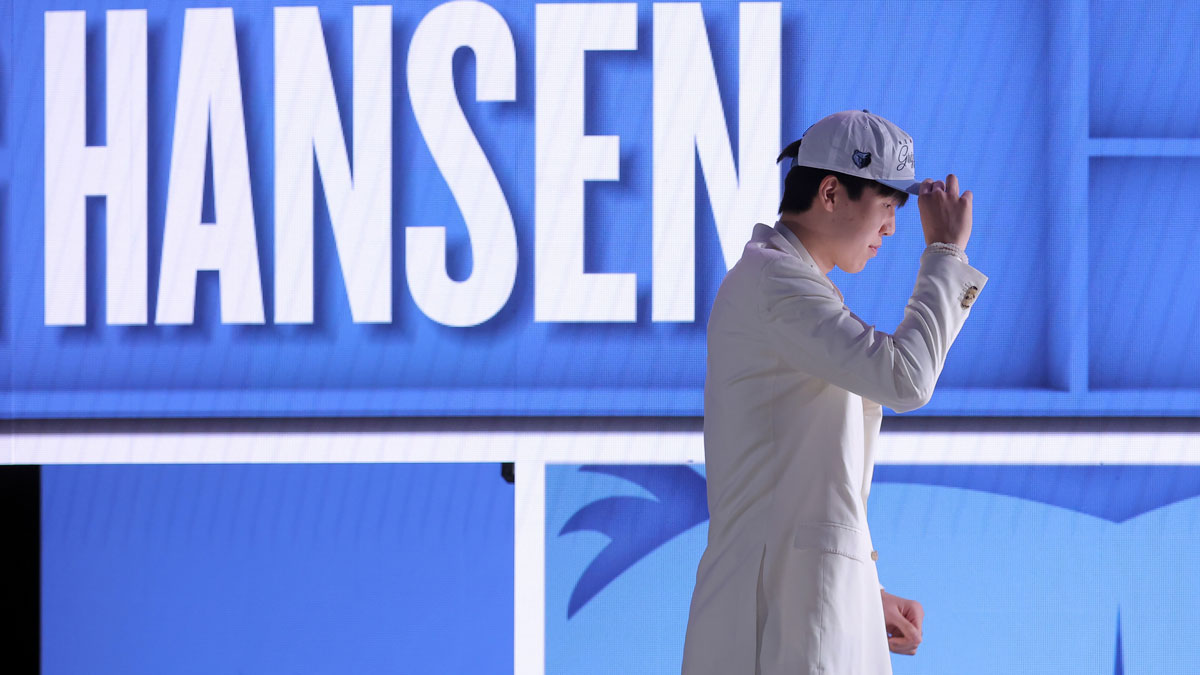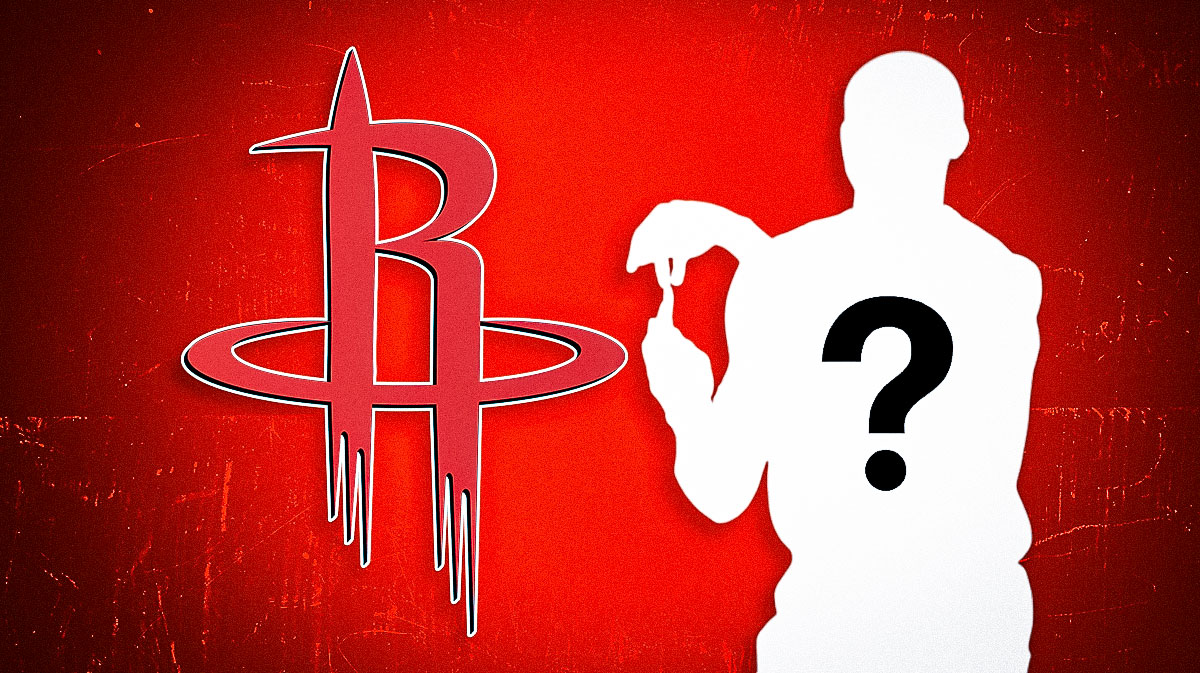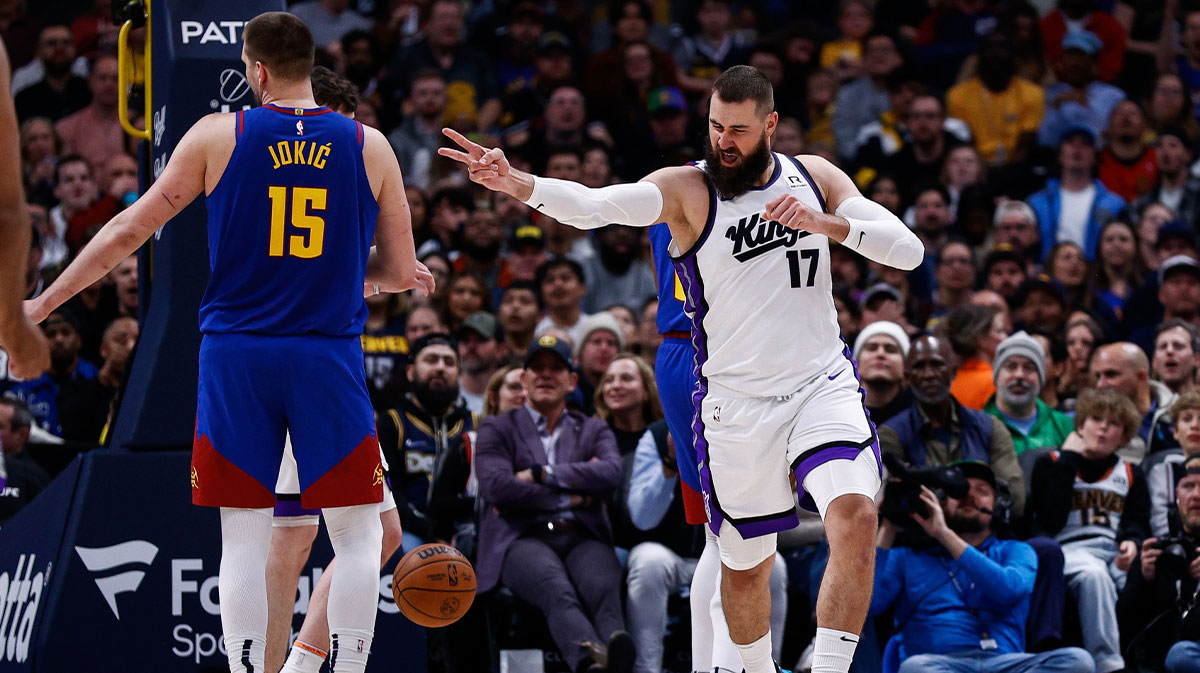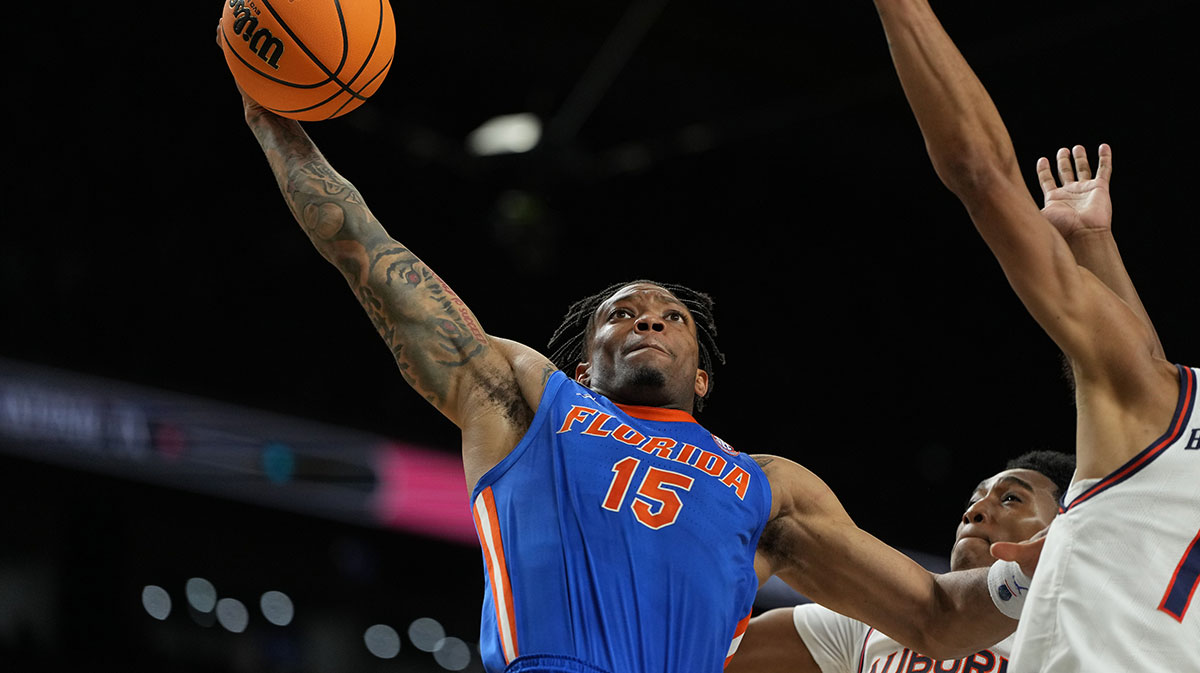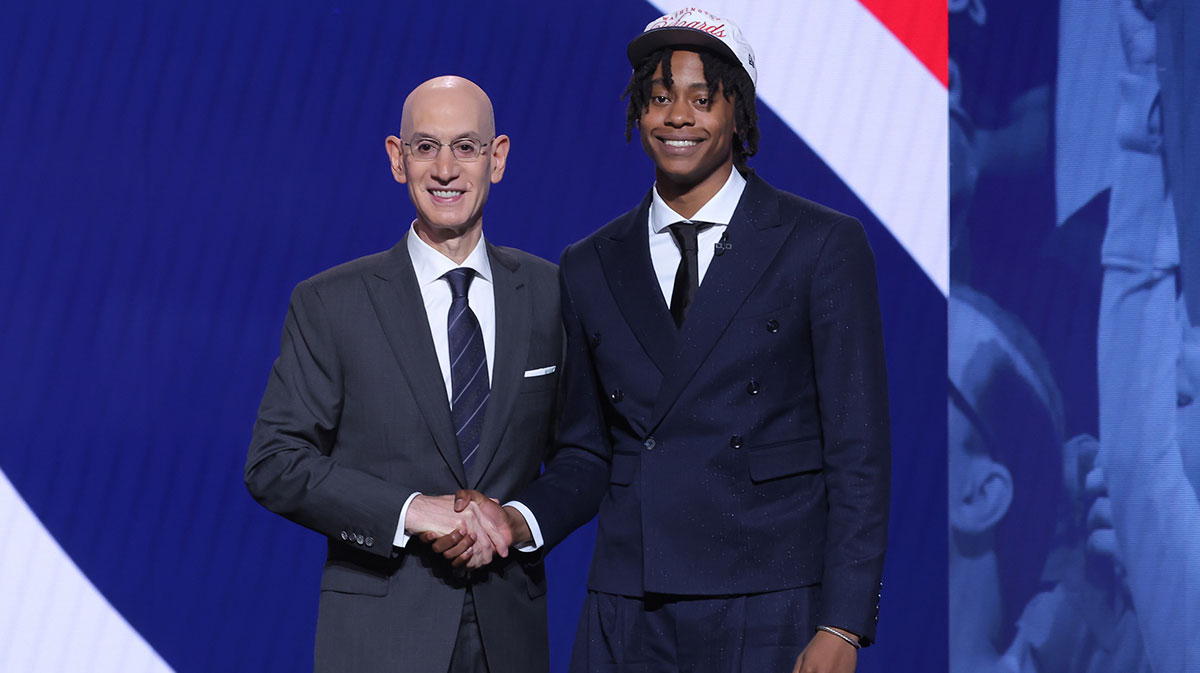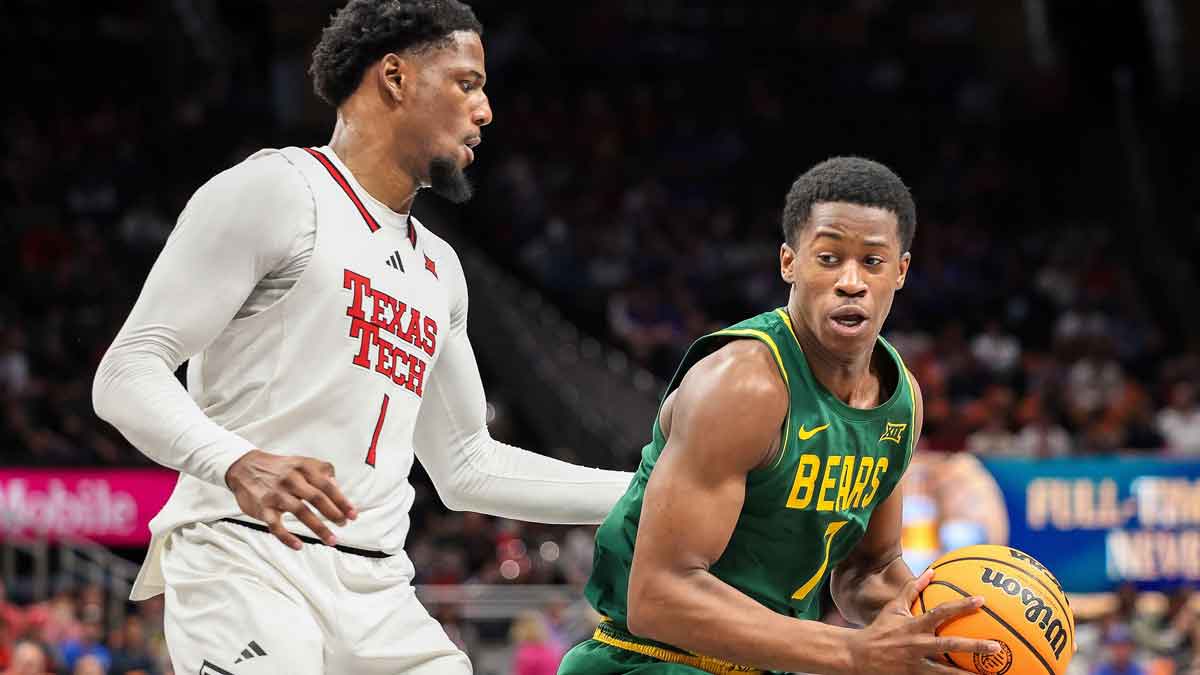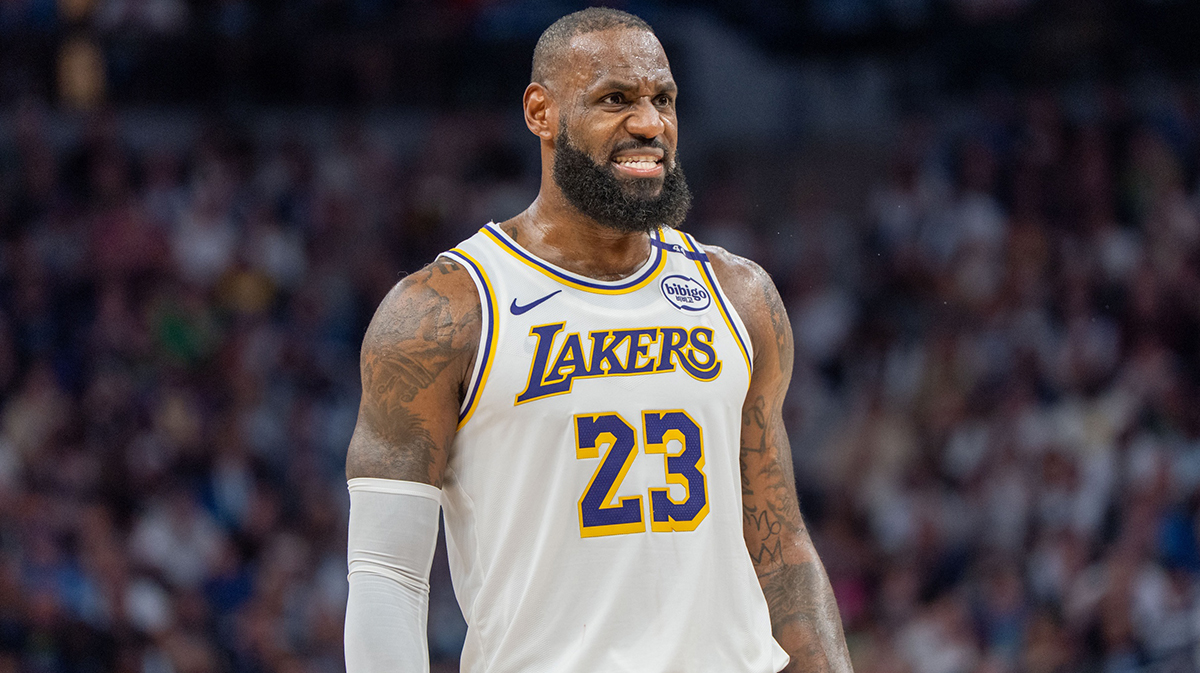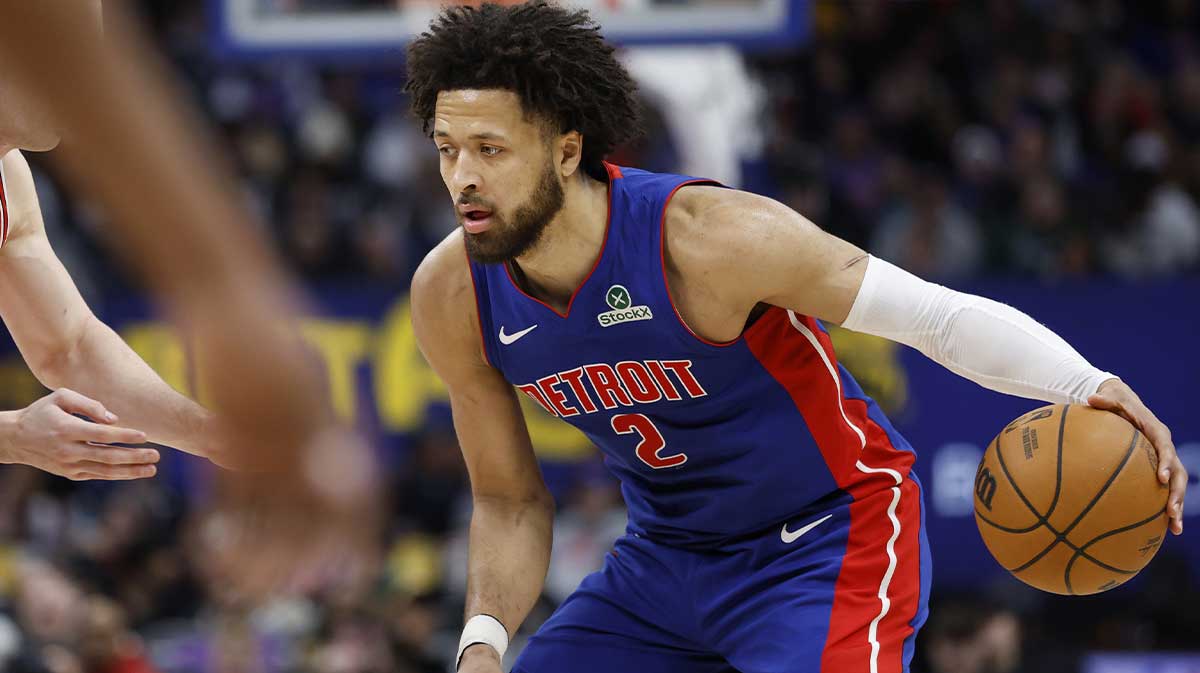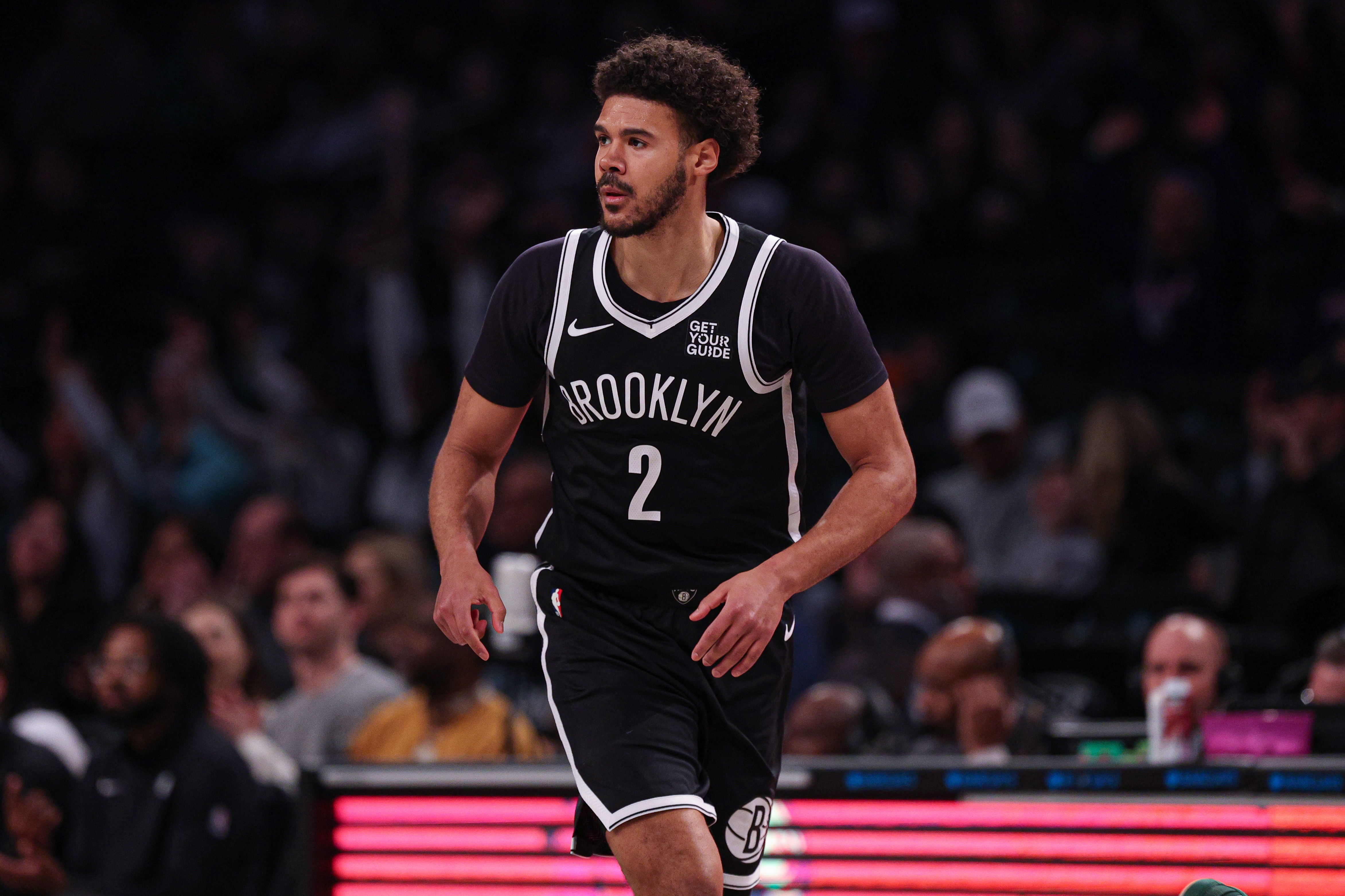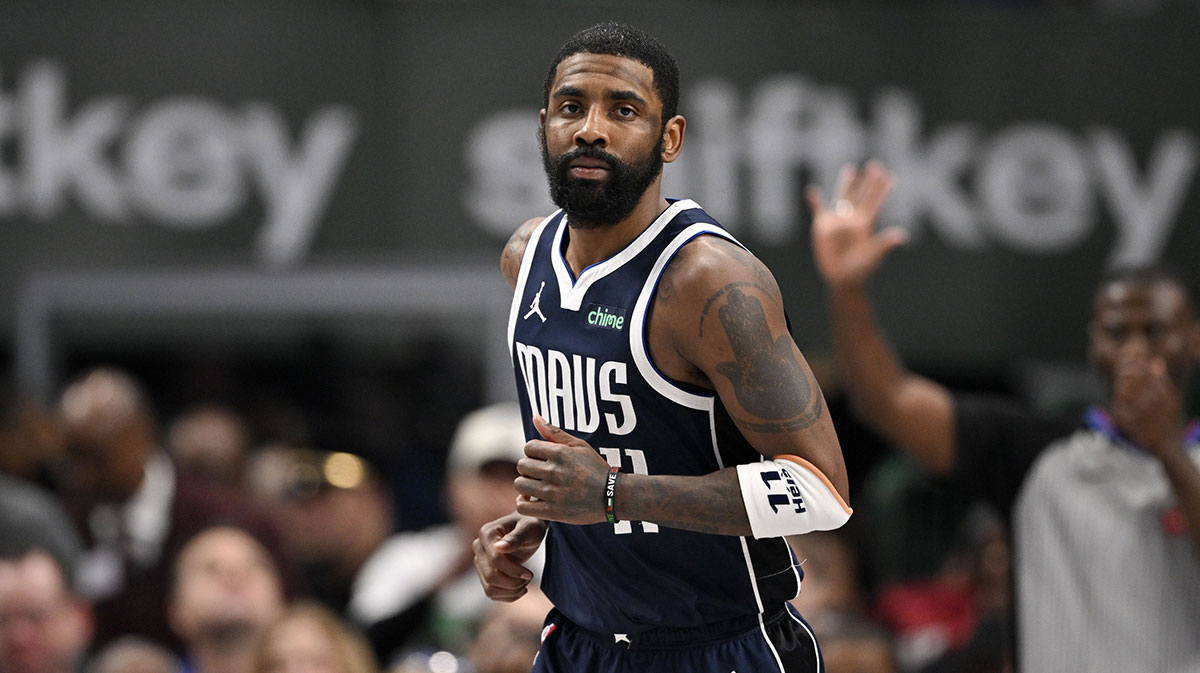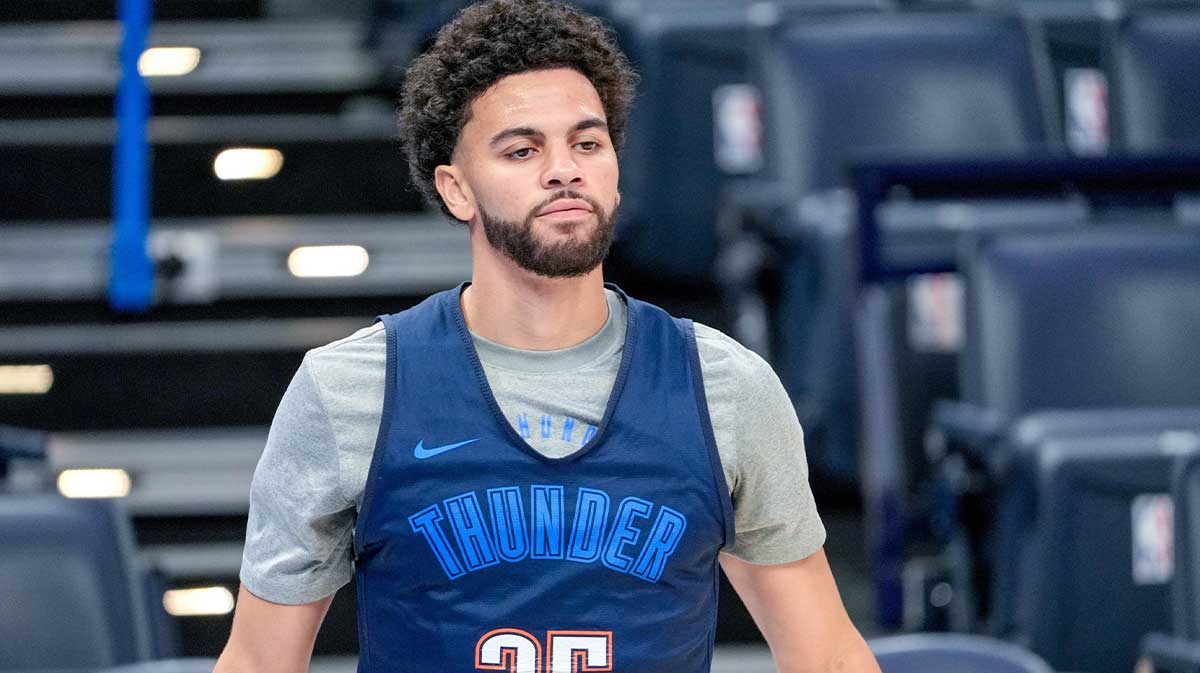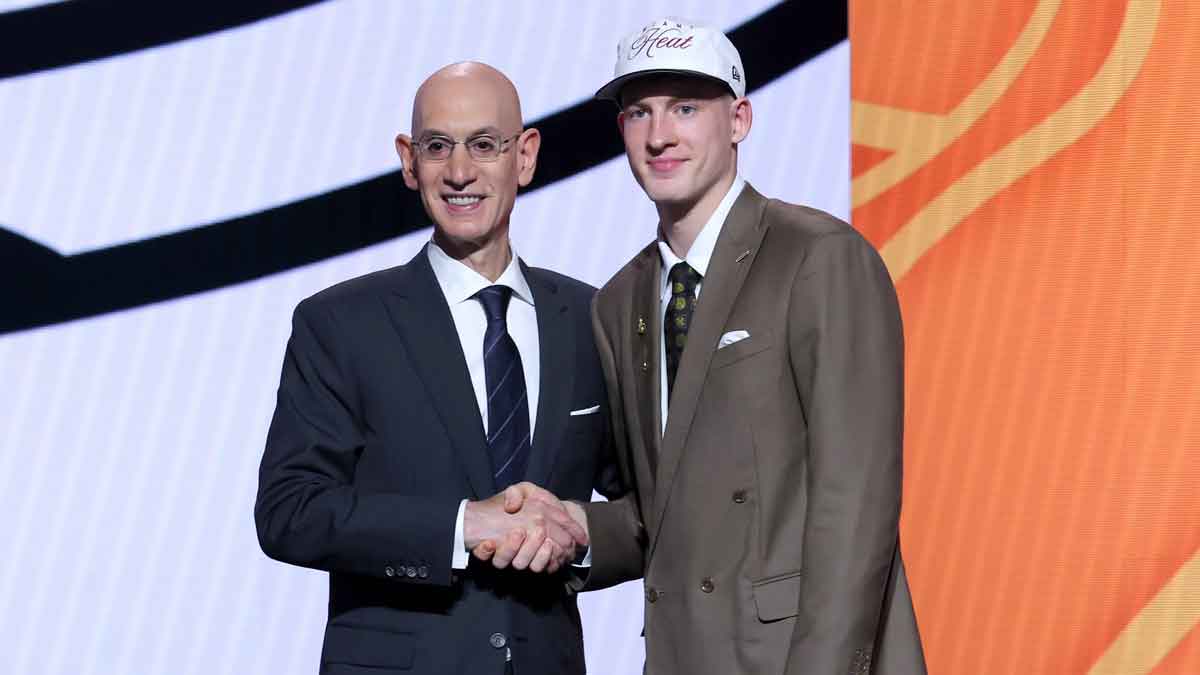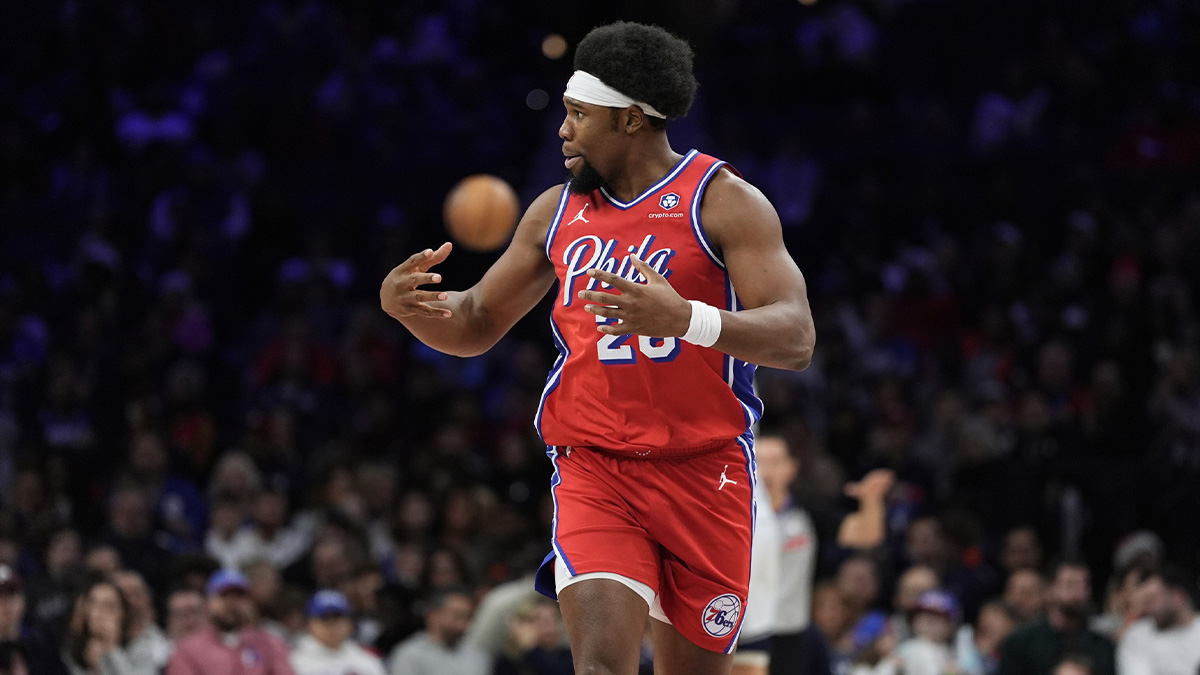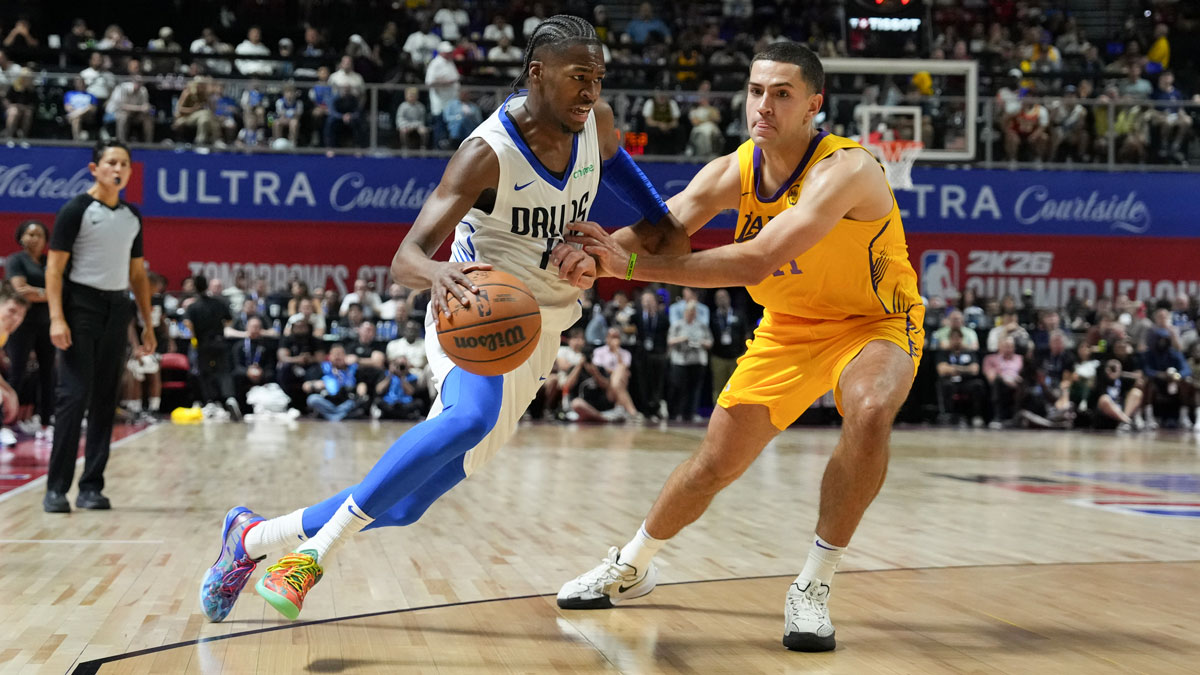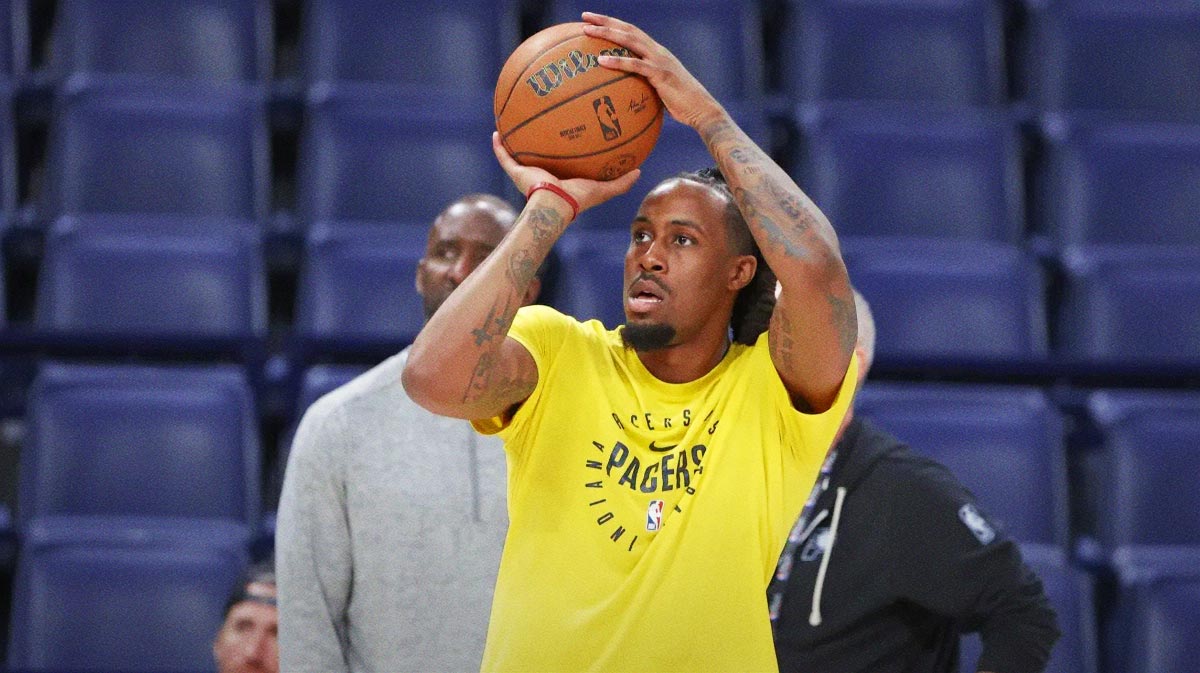Deliberate. Patient. Never in a hurry. These are words frequently used to describe Kyle Anderson.
While all are accurate, they are also polite euphemisms for slow.
Often a commentator will even pause in describing him, and you can almost hear the shuffling of the inner thesaurus as they decide to dance around the word, often for comic effect. It’s funny because Kyle Anderson has always been in on the joke. Slow is not an adjective he shies away from.
Slow-Mo is the nickname he embraces and it is apt. Slow-Mo’s MO is the perfect inversion of Marvel superhero, Quicksilver. While Quicksilver moves so quickly that those moving at a normal pace around him appear nearly stationary, Slow-Mo moves so slowly that other NBA players tend to sail past him. Despite the contrast, Kyle Anderson manipulates and navigates this time-altering plane as effectively as his speedier, fictional counterpart.
That’s hyperbole, but only just.
In his fourth season out of UCLA, Kyle Anderson has carved a niche for himself in the NBA. Had the San Antonio Spurs been blessed with a completely healthy roster to start the year, he may have found himself searching for minutes behind both perennial MVP candidate Kawhi Leonard and newly acquired Rudy Gay on the depth chart. Instead, he has started 54 games.
The Spurs have had a strangely snake-bit season. Just before All-Star break they played a game at Golden State with Patty Mills as the only available point guard. Two weeks ago, with Pau Gasol already out and LaMarcus Aldridge having tweaked his ankle in the first quarter, they played a second half against the rolling New Orleans Pelicans with Joffrey Lauvergne as their lone player taller than 6’9 to throw at Anthony Davis. Not to bury the lede but they’ve also been without Leonard nearly all season.
Suffice to say there have been a lot of holes to fill, and Anderson has hopped from one to another like a skee-ball. He is posting solid averages of 8.1 points, 5.6 rebounds, 2.8 assists, and 1.5 steals, shooting a shade under 52 percent in 27 minutes a night. At face value, the numbers, while nice, don’t overwhelm.
Looking deeper into Anderson’s game, into how those numbers are tallied and distributed, it becomes clear his greatest strength is an easily adaptable versatility. While the entire roster has been pulled like salt water taffy, perhaps no one has had to stretch more than Anderson. Luckily, he appears built for it. Technically, Slow-Mo has spent most of his minutes at one of the forward spots this year, but he’s done everything from run pick-and-roll to post up on the block, box out bigs and poke away possessions from point guards.
Creating

Anderson is completely in his element creating for others, dating back to his formative years at UCLA. He is a player in the vein of “Magic” Johnson or Ben Simmons, albeit with a little less “pep” to his step. In other words, he’s a point guard in a forward’s frame, unlikely to pull up off the dribble from deep anytime soon.
According to Cleaning the Glass, Anderson assists on 14.7 percent of his teammates’ made field goals while he’s on the floor. That assist percentage ranks him in the 90th percentile among forwards (as players who split time between small forward and power forward are categorized). His assist to usage ratio, which accounts for assists tallied relative to how often a player actually has the ball in his hands, is 92nd percentile for his position at .99. It has never been lower than .83 in his young career. His ability to create derives from a keen sense of timing and a comprehensive grasp of the game. Being taller than a fair number of defenders on the floor doesn’t hurt either.
An offense tends to function a little better with Anderson on the floor, even if he isn’t initiating it in the strictest sense. He scans the entire floor, identifying mismatches and advantageous angles. Often he will make a pass and then point toward another teammate, directing the recipient on where to advance the ball. He sees the game a play ahead, one of several gifts that make speed less of a necessity.
In the clip against the Hornets at the seven-second mark, notice Anderson looking for a seam in the defense as Aldridge comes off the pick by Bryn Forbes to set up in the post. As soon as Cody Zeller makes the decision to front and Aldridge effectively seals him on the high side, Anderson flashes to the high post, drawing Frank Kaminsky away from help position and gaining the angle to lob the high-low pass. He understands what the offense is trying to accomplish on any given play and helps to facilitate that end from either primary or peripheral role.
As a primary playmaker, Anderson is comfortable in a variety of situations. He is just as adept creating on the fly as running set plays. The subsequent clip after the Hornets play above shows him creating an open three for Mills in transition by tossing a little flip pass to the trailing guard while occupying the defense.
In the following play he runs pick-and-roll with Aldridge. With a quick in-and-out dribble he gets Khris Middleton to jump left of the pick then veers right into the lane, drawing the defense and subverting the Milwaukee Bucks’ defensive rotation with a pass that was covered in a video by CtG back in November.
Without blow-by speed, he leverages his size and a sure handle to get into the paint—he’s a big fan of the inside-out dribble to throw defenders off balance.
At 51 seconds is a great example of his understanding of all the moving parts of a given set, and the timing necessary to make them all fall into place. He takes the handoff from Aldridge and continues to his left, peeking at Davis Bertans coming off the pick by Mills under the basket, but also giving Aldridge time to get into position to screen for Mills, and Mills time to relocate off the screen to the three-point line.
Anderson turns back to his right just as Mills is breaking into a sprint and hits the Aussie with an on-target pass just as Mills turns into position ready to shoot. Zach Randolph actually does a nice job switching off Aldridge to contest the shot by Mills, but Aldridge gets great position for the tip in.
That Anderson is the man at the top of the key quarterbacking such a play signals he seems to have gained Gregg Popovich’s trust as a playmaker, a notion reinforced by the clip at the 1:23-mark. When the Spurs needed a bucket late in a game in Portland, you can see by Popovich pointing from the sideline he wanted the ball in Anderson’s hands. Anderson rewarded Popovich’s faith by directing traffic, rejecting the screen from Gasol, then stringing out the play with one of his signature hesitation dribbles until Gasol was in perfect position, passing easily over CJ McCollum to the diving big man for the and-one.
At the end of the video is another simple wrinkle the Spurs recently employed against the Los Angeles Lakers. Anderson screens Isaiah Thomas, forcing the mismatch then posting up. When the Lakers send help, it’s easy enough for Anderson to find Bertans for the open three.
Passing out of doubles in the post, finding teammates in the chaos of transition or an offensive rebound, drive-and-kick dishes, no-looks, pick-and-roll pocket passes, wraparound drop-offs, all fit comfortably in Anderson’s repertoire. He is about as versatile a playmaker as there is.
Scoring

Although it’s no secret he loves to pass the ball, Anderson has been more aggressive this season and has shown himself to be a capable if atypical scorer as well. According to the NBA’s playtype data provided by Synergy, he grades out above average in isolation, off handoffs, and as a pick-and roll ball handler.

He doesn’t have a quick release and isn’t the kind of long-range threat that will keep a defense honest. Nor does he create space or driving lanes the way many scorers do. The truth is, he doesn’t need much space.

According to Tracking data available on nba.com, Anderson has taken the vast majority of his shot attempts with a defender within two to four feet, defined by the NBA as “tightly” guarded. He’s converting 55.2 percent of those attempts. Of the shots taken with a defender even closer, he is making an absurd 70 percent.
In fact, most of Anderson’s go-to moves seem designed to draw the defender in. While length is rendered unwieldy and ineffective in close combat—it’s pretty difficult to swing a spear or point a rifle at someone one foot away, or so I hear—the opposite is true when trying to get a shot up in basketball. The 6’9 Anderson with a more than 7’2 wingspan uses this to his advantage well. Hesitation dribbles and shot fakes beckon defenders nearer, then he uses his long reach and stride to wrap around or shoot over the defense.
Kyle Anderson modeled his game after surprisingly good dad at the Yhttps://t.co/BDoEzXZl8m
— Tom Petrini (@RealTomPetrini) March 9, 2018
It should not work. Theoretically, opponents should be laying off, living with contested jumpers from Anderson. Yet defenders keep biting on his pump fakes. Over and over again. In the video above he gets Defensive Player of the Year candidate Paul George at the 7-second mark, both Wesley Matthews and Salah Mejri in the same possession in the following clip, and Donovan Mitchell trying to close a trap at 1:47.
He’s at least close enough to the basket in each of those plays to warrant some overreaction. In the Feb. 10 game at Golden State in which he scored a career high 20 points on a shooting percentage of 69, he had lauded defender Kevin Durant jumping all over the place. In the two consecutive clips beginning at 1:29 you can see Durant start out guarding Anderson tightly until Anderson gives a quick shot fake then steps through to score.
In the next clip Durant leaves a cushion as Anderson waits for Aldridge’s pick, as does Draymond Green for the brief second he is switched onto Anderson. As they switch back, essentially no one is guarding Anderson when he gets the ball back at 1:42. Klay Thompson feels obliged to jab at his first fake then recovers to Darrun Hilliard on the wing. With Anderson having given up his dribble, Durant lunges at the second pump fake, only for Anderson to step through for another leaning floater. In both clips Anderson picks up his dribble outside the lane but lands with both feet in the paint thanks more to stride than hang time.
Sometimes the defense is just undisciplined, but it happens so often we have to give Anderson some credit for being sneakily deceptive. The guy who goes by Slow-Mo has a game designed to keep foes off balance. His myriad fakes and changes of speed—from first gear to second and back—provoke reactions similar to the off-speed pitches that have MLB hitters tied up and falling over themselves after looking at fastballs all night. There’s just no accounting for the difference in expectation versus reality coming up against his speed relative to others in the NBA, or the way he further manipulates opponents still trying to get their sea legs.
One way or another he gets to his spots, all of which are within the mid-range. Via CtG, 42 percent of his shots are at the rim, while another 32 percent come from the short mid-range, defined as shots outside of four feet but within 14 feet. Once he gets where he’s going he has all manner of finishes at his disposal.
After going 9-of-12 from the field for what was then a career high of 18 points against the Denver Nuggets on Jan. 30, Anderson told assembled media of his attack: “I just try to be creative, crafty. That’s how I’ve seen the game of basketball my whole life. Just try to use my smarts, or a pump fake, or a double clutch, whatever it is. Trying to find a way around it.”
Primary examples of both pump fake and double clutch can be found in the back-to-back clips of him attacking Nikola Jokic on that night, beginning at 1:03 in the video above. He’s also got reverse layups, hook shots, and floaters—including the one he lofts over Rudy Gobert at the end of the video.
TOP 10 IN FG% ON DRIVES (min 100 FGA)
1. LeBron James (59.8)
2. Joe Harris (58)
3. Kevin Durant (57.4)
4. Stephen Curry (56.9)
5. Tony Parker (56)
6. James Johnson/S. Ibaka (55.9)
8. Jrue Holiday (55.8)
9. Khris Middleton (54.9)
10. Kyle Anderson (54.5)https://t.co/7qpL2PIapD pic.twitter.com/F952Ic1VLs— Andy Bailey (@AndrewDBailey) March 5, 2018
As Andrew Bailey of FanRag Sports tweeted on March 5, Anderson’s craft and finishing ability have him in the top 10 for field goal percentage on drives. That puts him in the company of superstar forwards like LeBron James and Durant, as well as guards like Stephen Curry, Tony Parker and Jrue Holiday. Not bad for a dad at the Y (h/t Tom Petrini).
Off Ball
Beyond the arc is the last offensive frontier for Anderson. He has made strides on his three-point form but the numbers currently do nothing to support that. (Though it is worth noting he is shooting 58 percent from the right corner three this season and has not shot worse than 46 percent from that spot in his career). Right now his percentage on triples for 2017-2018 is sitting at .279, the worst mark since his rookie season. He made 38 percent of his 29 three-point attempts through January; he is 1-of-14 since.
The struggles from distance can cause problems for Anderson and his teammates. In the last month we’ve already seen high IQ, disciplined defenders like LeBron and Draymond sitting back in Aldridge’s lap as Anderson tries to enter the ball in the post. Anderson has some chess moves to counter this.
Really fun to watch two high IQ players play chess. Kyle changes his angle, Bron sags off to defend against post entry/dare Kyle to shot. Kyle shot fakes, gets it to LA, goes to clear. Bron doubles off KA, KA flashes to the ball. So many moves & countermoves within a possession. pic.twitter.com/yHt9qwqjHV
— Sarah (@WildHorses65) February 25, 2018
One skill handy in combating them is his penchant for moving intelligently without the ball.
Despite spending most of his college career with the ball in his hands, Anderson is a natural cutter in the NBA. About 13 percent of his offense comes on cutting plays and he is shooting 72.9 percent to produce 1.43 points per possession in such situations. That’s good enough to rank him in the 80th percentile.
As is true of about everything with Anderson, he scores off cuts in a variety of ways. The first clip in the compilation above is a straight backdoor, no frills. He’s also found success in faking like he’s about to set a pin-down screen, then slipping to the rim. Gasol connects with him on this type of play at both the four-second and 55-second marks.
Setting a backscreen for a shooter then diving to the basket is just as effective, as he does for Forbes at 26 seconds. It’s almost more of a flare screen he sets for Bertans at 37 seconds in, but the result is the same.
If teams choose to rotate off of him—as the Warriors do during an Aldridge post-up at 20 seconds, and the Lakers do during a Gasol post-up at 42 seconds—he will flash to the ball to make them pay at the rim rather than wait for a catch-and-shoot opportunity. This form of attack is especially important when teams do not respect Anderson’s three-point shot.
Ultimately, no counter move in lieu of three-point veracity can better accomplish what the longball will. Becoming a legitimate three-point threat at least from the corners, including the confidence and willingness to shoot it without hesitation, can unlock the rest of Anderson’s potential—not to mention space for teammates on the floor around him. For now, it is a positive that he is getting to the spots where he is most successful.
Defense

For all his offensive ability, Anderson has been just as versatile—if not more so—on the defensive end. On occasion, he’s been asked to check Ben Simmons, Devin Booker, James Harden, LeBron James, Kevin Durant, and Anthony Davis this year, among others. ESPN has him as the top-ranked small forward in defensive real plus-minus.
We discussed both his length and anticipation—at length—above. Both serve him well on this end of the floor too. Though he may not move quickly, he does not waste steps. While his pace may be slower than others, he compensates by covering a lot of ground with long strides and longer arms.
His wingspan imbues him with the supernatural ability of the Hollywood monster. Just when his mark thinks it’s safe to exhale, that Anderson has been left behind—vanquished by a crossover or a pump fake—long arms reach out to drag them back into the dark.
A sidestep simply is not enough distance to put between oneself and Anderson’s reach, as J.R. Smith found out on this possession, when Anderson was improbably able to recover even after biting on the fake. It’s like trying to pump fake the clown doll in Poltergeist. It’s feeling safe cause you pulled the covers over your head when the monster is already in your room.
Nor is opting to drive the open lane necessarily safe. If the drive isn’t quick and direct it’s basically dropping the knife by the killer’s body and walking away. Booker does all the work to get Anderson on his hip and even pull in front of him, but Gasol’s help forces Booker to move slightly sideways rather than straightforward, and when he goes to shoot the ball is gone.
Anderson has amassed a block percentage of 1.5 according the CtG’s calculation, putting him in the 90th percentile among forwards. The only thing more impressive is his 96th percentile ranking for his 2.5 steal percentage. That means for every 100 defensive plays for which Anderson is on the floor, he’s snagging 2.5 takeaways.
For all the talk about how slow he moves, Anderson has a hair-trigger when he senses vulnerability in an opponent’s handle. He strikes the moment an opening reveals itself, seems to know it will be there even before, and his reach allows him to jab for the ball without gambling heavily or sacrificing balance.
Kyle Anderson is E. Honda. Slow character. Fast hands. pic.twitter.com/YOYFrKm0uB
— Jesse Blanchard (@blanchardJRB) March 9, 2018
Against the Warriors last Thursday night, all three of Anderson’s signature on-ball takeaways were on display as he matched his career-high of five steals in back-to-back games.
The Straight Pokeaway
Anderson will pluck the ball right off an opponent’s hip as if he’s slipping $20 out of the guy’s pocket. He gets Nick Young in isolation in the video immediately above, but it seems to happen frequently just as the ball handler is about to come off a pick. Examples of the latter occur in the compilation video two paragraphs back, as Anderson strips Emmanuel Mudiay at the 47-second mark, Wilson Chandler at 1:06, and Chandler Parsons at 1:47.
The Crossover Search & Seizure
Just as Anderson seems able to zero in on exactly where the ball will be as a pick is set, he also has great timing attacking the crossover. In this way he winds up with steals from quick guards like DeAaron Fox at 40 seconds, Harden at 51, and Jordan Clarkson at 1:18. If I had to guess, this might be because some players tend to pull the receiving hand of a crossover up slightly, like recalling a yo-yo, thus exposing the ball. This looks like it might be the case with Clarkson, but frankly all three keep the ball pretty low and cross it quickly. It’s just that Anderson actually strikes quicker. Notice also how tightly he’s guarding them.
The Wraparound Matador
Sometimes Anderson appears almost to strategically give ground, like the old “pull the chair” move, knowing he can reach the ball even if he allows the offensive player to get into or even by him slightly. He employs this against post ups and drivers alike. He gets Durant a couple times this way, as well as Wayne Selden in the play leading to the alley-oop at the end of the compilation. It also works against Anthony Davis and Carmelo Anthony in the post starting at 1:30.
Off ball, he’s pretty fundamental about getting one of his arms in the passing lane. He rips a handoff from JaMychal Green to Parsons and a pass from Draymond to Durant observing this simple tenet of the game.
Occasionally Anderson will get blown by. That can happen when superstar scorers who also happen to be explosive athletes with a wingspan to rival Anderson’s rip through on him and take advantage of their quick first step, and it happens to anyone. For the most part, Anderson’s wagers are low risk, high reward. He’s held his own quite nicely, as both numbers and eye test will attest.
The Spurs source for a little bit of everything
Kyle Anderson is not a specialist. His NBA skill is being able to do a whole lot at an above-average level. The phrase “jack of all trades, master of none” is sometimes used as a pejorative, but it need not be in his case. His adaptability has been a necessity for the battered Spurs, and could have been a luxury had they been healthy.
As well as Anderson has played against starters, imagine if he were able to come off the bench more often. For any Spurs fans who enjoy the unnecessary torture of what-if, CtG’s lineups page is chock full of fun with small sample sizes. A potential bench lineup of Mills, Manu Ginobili, Anderson, Gay, and Gasol is listed at +36.8 in 19 possessions together. Swap Bertans in for Gay at the four and they’re +20.5 in 15 possessions. In the time they have spent on the floor together, Anderson and Bertans have looked like a seamless fit at three and four; they are switchable on defense:
Kyle and Davis at 3/4 is a fun lineup wrinkle for the Spurs They can switch fairly easily because Kyle’s no pushover and Davis moves his feet very well on the perimeter. pic.twitter.com/SGpRziZUto
— Sarah (@WildHorses65) January 12, 2018
And both good passers who move well without the ball and look for each other on offense.
That is to say nothing of the interesting mix and match lineups the Spurs could have thrown at the Warriors’ Death Lineup and whatever we’re calling the juggernaut in Houston, were Leonard healthy. In brief appearances, lineups with Leonard at three and Anderson at four grade very well on CtG. Dejounte Murray, Danny Green, Anderson, Gay, and Aldridge are +77.2 in 30 possessions together. Swap a healthy Leonard for Murray and run offense through him or Anderson and you have a scary long unit with the potential to be very versatile on both ends.
For now, that all remains an exercise in imagination. Anderson’s value, however, is sure. He can play and guard just about any position on the court, and is a legitimate threat to pick up or at least flirt heavily with a 5×5 on any given night. The crucible that would have bent many players well past their comfort zone has instead revealed a utility man with a game both uniquely unorthodox and befitting today’s NBA.
Kyle Anderson may be moving in slow-motion but he arrived right on time.

